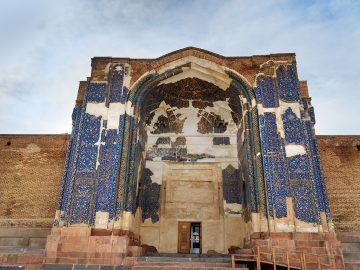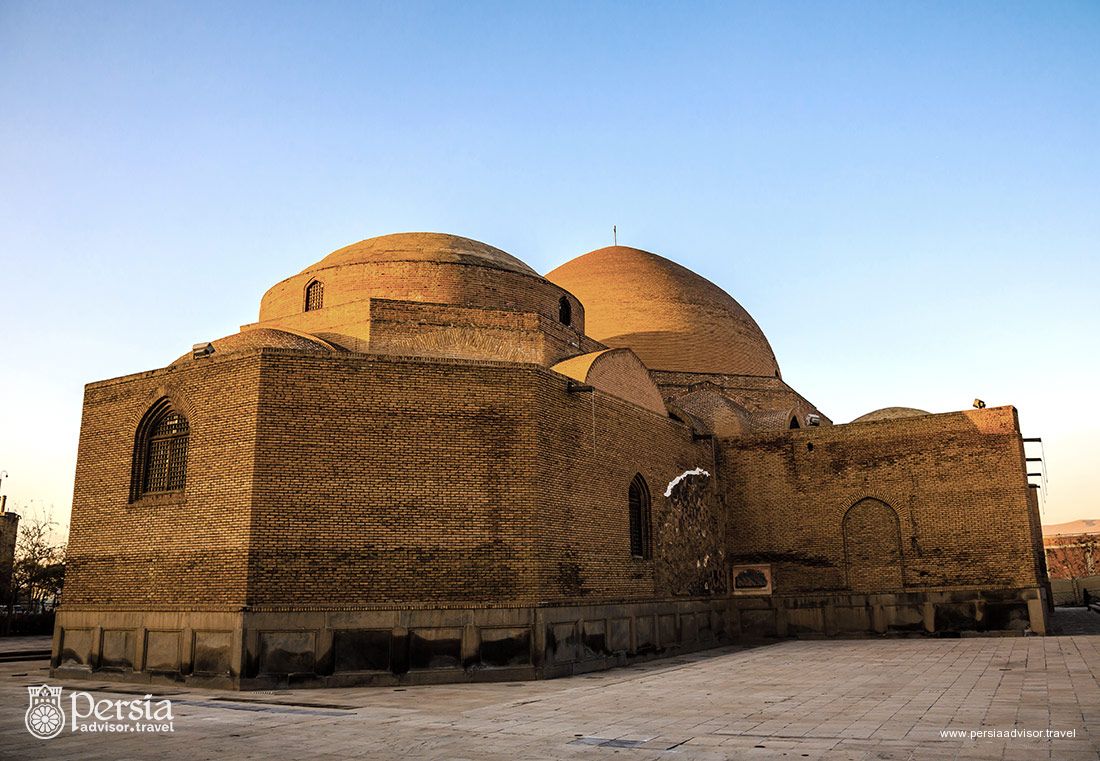
The Blue Mosque is a famous mosque in Iran in the city of Tabriz, East Azerbaijan Province. It dates back to Kara Koyunlu reign, an Oghuz Turk tribe that ruled over west and north-west of the country about 1375 to 1468. The mosque was built by the order of Sultan Jahanshah’s wife, Jan Beygom Khatun; Sultan was the third Kara Koyunlu’s king while, years later when Kara Koyunlu was overthrown by Ak Koyunlu, the king’s daughter, Saleheh, supervised the rest of the construction.
The Blue Mosque has an inscription mentioning that it was built in the 15th century. The name of the mosque refers to its blue and turquoise tiles that are adorned with magnificent calligraphies in different styles in white color.

Notably, the blue mosque was part of a large complex that used to be known as Mozafariyeh complex. It included several constructs such as school, library, mosque, monastery, caravanserai, bathhouse, courtyard, cemetery, gardens, and square but today just the mosque has remained. The famous Silk Road was near this complex and this caused the growth of the place.
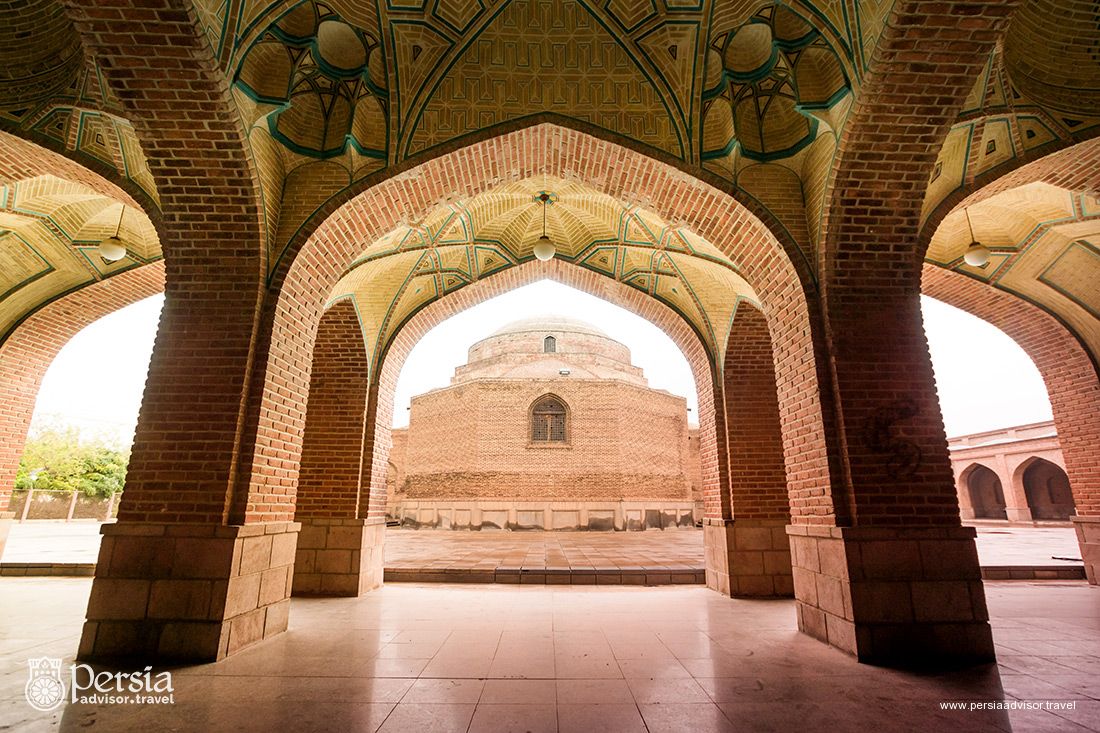
The architectural style of the mosque is known as Razi, which is an Iranian form dating back to the Mongol Empire (1256-1335). This style focuses on details of decorations of domes and vaults. The Blue Mosque includes a staircase, portal entrance, Iwan, side prayer halls, two domed chambers, and a courtyard, and in general, it is in the shape of a square having a small central pool. The most magnificent part of this construct refers to two domes and domed chambers; the smaller chamber is a tomb.
The main and larger dome has a big prayer hall (Shabistan), while the southern one possesses a smaller domed chamber. The southern part of the mosque has also a basement with two tombs belonging to the royal family, Jahan Shah and his daughter, which were found during the restoration of the mosque. This style of architecture today is known as mosque-tomb or mosque-monument.

Besides the two domes mentioned above, the masque also consists of seven shorter domes over prayer halls on the east and west sides of the main courtyard and entrance. It seems the Blue Mosque used to have two minarets on either side of the entrance but today nothing has remained of them. In 1780, in the aftermath of an earth quack in Tabriz City, the mosque was heavily damaged such that almost all of its constructs with the exception of its Iwan (entrance hall) were ruined.
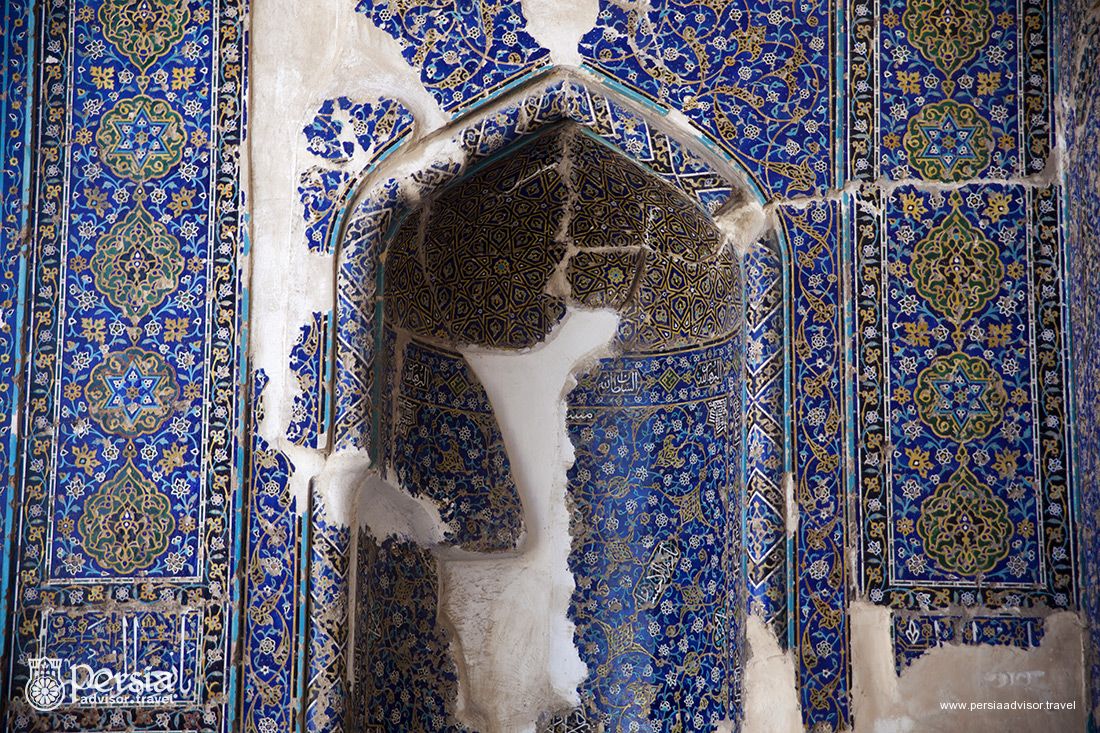
The restoration of the mosque began in 1939 and it was reconstructed to some extent in 1973 during the Pahlavi Era (1925-1979). Today, the highlights of the mosque include its tall portal entrance and the magnificent tiling of both portal and ceilings that is a combination of gold and azure blue in color.
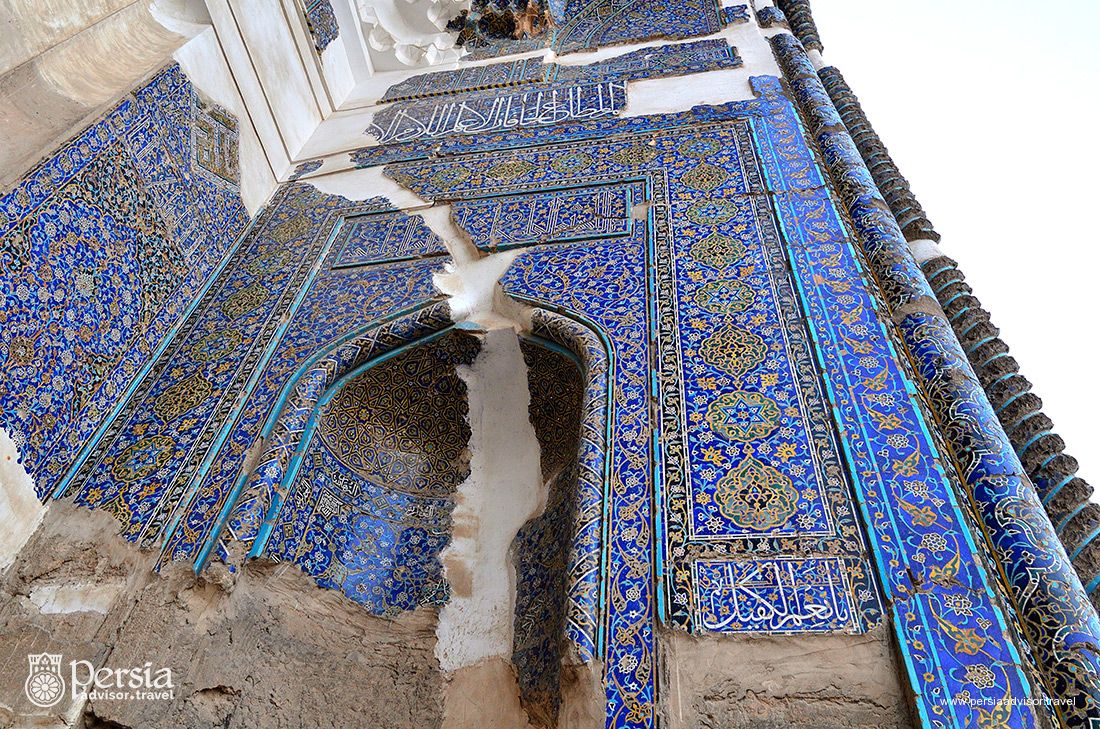
The entrance of the mosque is adorned with mosaic tilling and an inscription that was decorated with Reqa. The description of this complex is mentioned in several historical sources, among which a book entitled Rozat al Jenen meaning flowers of paradise could be regarded as the most famous one.
Numerous travel books of famous 17th-century travelers like Tavernier have also mentioned the name of the place as well. In 1931, this mosque was registered as a National Heritage by Iranian Cultural Heritage, Handicrafts and Tourism Organization.

